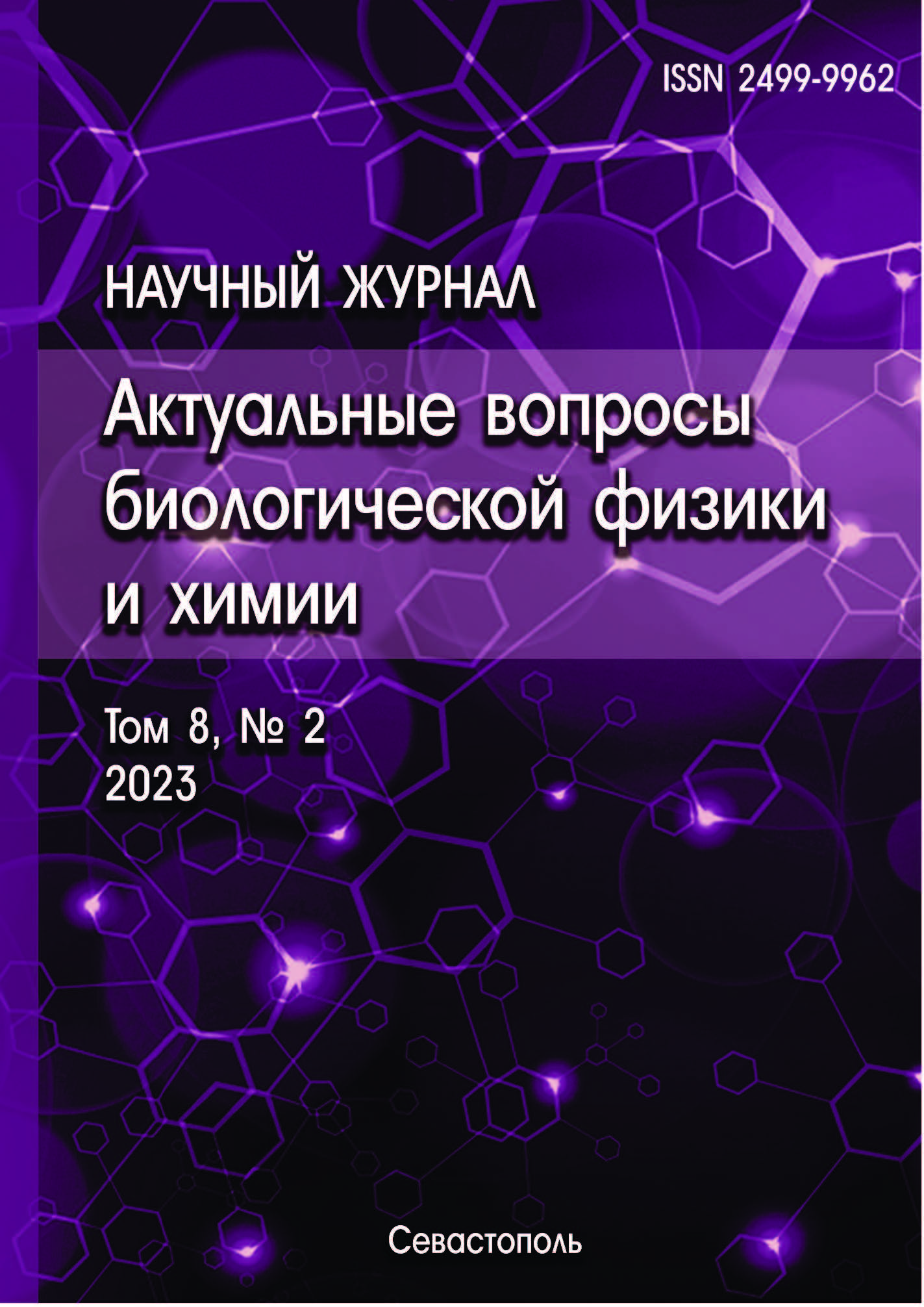Moscow State Academy of Veterinary Medicine and Biotechnology - MVA by K.I. Skryabin
Russian National Research and Technological Poultry Farming Institute, RAS
Moscow, Moscow, Russian Federation
Moscow, Moscow, Russian Federation
Moscow, Moscow, Russian Federation
Moscow, Moscow, Russian Federation
It has been shown that nitrite is normally present in most tissues at a concentration not exceeding 50 nM. But the tissues contain NO donor compounds in concentration dozens of micromoles. Consequently, there are mechanisms in the tissues that prevent the oxidation of NO to nitrite. The NO donor compounds do not spontaneously dissociate with the release of NO. The transformation of NO included in the composition of donor compounds to nitrite and non-thiolate nitroso compounds (NO2- + RNO) occurs under the action of active oxygen species (ROS) and, above all, superoxide that is produced by activated phagocytes. Thus, the content of NO2- + RNO is a very sensitive indicator of phagocyte activation, a process that accompanies any inflammation. In this paper, the possibility of using the NO2- + RNO content as indicator for the early diagnosis of inflammatory diseases is considered. It has been shown that this indicator has greater sensitivity and specificity than all known clinical and biochemical indicators. This makes it especially valuable for monitoring the state of patients in the hospital, monitoring the farm animals. The factor limiting the use of the NO2- + RNO indicator in diagnostics is the permeability of tissue barriers to these compounds. This is especially important for monitoring the condition of the fetus, as well as the state of the central nervous system.
nitric oxide (NO), nitrite and non-thiolate nitroso compounds (NO2- + RNO), phagocytes, inflammation
1. Shumaev K., Gubkin A., Gubkina S., Gudkov L., Sviriaeva I., Timoshin A., Topunov A., Vanin A., Ruuge E. Interaction between dinitrosyl iron complexes and intermediate products of oxidative stress. Biofizika, 2006, vol. 51, pp. 472-477.
2. Shumaev K., Gubkin, A., Serezhenkov V., Lobysheva I., Kosmachevskaya O., Ruuge E., Lankin V., Topunov A., Vanin A. Interaction of reactive oxygen and nitrogen species with albumin- and methemoglobin-bound dinitrosyl-iron complexes. Nitric Oxide, 2008, vol. 18, pp. 37-46, doi:https://doi.org/10.1016/j.niox.2007.09.085.
3. Titov V., Osipov A., Vanin A. The Ability of Blood Plasma to Inhibit Catalase in the Presence of Chloride is a Highly Sensitive Indicator of Deposited Nitric Oxide and Leukocyte Activation. Current Enzyme Inhibition, 2020, vol. 16, no. 2, pp. 172-180, doi:https://doi.org/10.2174/1573408016999200429123919. EDN: https://elibrary.ru/ZGNZKA
4. Tarpey M., Wink D., Grisham M. Methods for detection of reactive metabolites of oxygen and nitrogen: in vitro and in vivo considerations. Am. J. Physiol. Regul. Integr Comp. Physiol., 2004, vol. 286, pp. R431-R444, doi:https://doi.org/10.1152/ajpregu.00361.2003. EDN: https://elibrary.ru/KNFIAU
5. Yemchenko S.V., Tsyganenko O.I. Analytical review. Novosibirsk, 1993, vol. 27, pp. 95-115 (In Russ.).
6. Titov V.Yu., Petrenko Yu.M., Vanin A.F. Method of determination of nitroso compounds and nitrite in biological objects. Patent of the Russian Federation, no. 2395096, reg. July 20, 2010 (In Russ.).
7. Titov V., Petrenko Yu., Vanin A., Stepuro I. Detection of nitrite and nitrosocompounds in chemical systems and biological liquids by the calorimetric method. Biophysics, 2010, vol. 55, no. 1, pp. 77-86.
8. Titov V. Dolgorukova A.. Osipov A., Kochish I. Putative Role of Ligands of DNIC in the Physiological Action of the Complex. Bull Exp Biol Med., 2021, vol. 171, no. 5, pp. 606-610, doi:https://doi.org/10.1007/s10517-021-05278-1. EDN: https://elibrary.ru/IFJFQP
9. Titov V., Osipov A., Kreinina M., Vanin A. Features of Metabolism of Nitric Oxide in Normal State and Inflammation. Biophysics, 2013, vol. 58, no. 5, pp. 676-688.
10. Vanin A., Poltorakov A., Mikoyan V., Kubrina L., Burbaev D. Polynuclear water-soluble dinitrosyl iron complexes with cysteine or glutathione ligands: electron paramagnetic resonance and optical studies. Nitric Oxide, 2010, vol. 23, no. 2, pp. 136-49, doi:https://doi.org/10.1016/j.niox.2010.05.285. EDN: https://elibrary.ru/MXJIUH
11. Lee S., Lee J., Seong H., Lee S., Park J., Romero R. et al. The clinical significance of a positive Amnisure test in women with term labor with intact membranes. J. Matern. Fetal. Neonatal. Med., 2009, vol. 22, no. 4, pp. 305-310, doi:https://doi.org/10.1080/14767050902801694.
12. Kharitonov V., Sundquist A., Sharma V. Kinetics of nitrosation of thiols by nitric oxide in the presence of oxygen. J. Biol. Chem., 1995, vol. 270, no. 47, pp. 28158-29164, doi:https://doi.org/10.1074/jbc.270.47.28158.
13. Licht W., Tannenbaum S., Deen W. Use of ascorbic acid to inhibit nitrosation: kinetic and mass transfer considerations for an in vitro system. Carcinogenesis, 1988, vol. 9, pp. 365-372. EDN: https://elibrary.ru/IMSKUB
14. Rassaf T., Preik M., Kleinbongard P., Lauer T., Hei Ch., Strauer B-E., Feelisch M., Kelm M. Evidence for in vivo transport of bioactive nitric oxide in human plasma. J. Clin. Invest., 2002, vol. 109, no. 9, pp. 1241-1248.
15. Severina I., Bussygina O., Pyatakova N., Malenkova I., Vanin A. Activation of soluble guanylate cyclase by NO donors - S-nitrosothiols, and dinitrosyl-iron complexes with thiol-containing ligands. Nitric Oxide, 2003, vol. 8, no. 3, pp. 155-163. DOI: https://doi.org/10.1016/S1089-8603(03)00002-8; EDN: https://elibrary.ru/LHUNSP
16. Titov V., Osipov A., Ibragimova L., Petrov V., Dolgorukova A., Oleshkevich A. Hypothetical mechanism of light action on nitric oxide physiological effects. Lasers in Medical Science, 2021, vol. 36, no. 7, pp. 1389-1395, doi:https://doi.org/10.1007/s10103-020-03169-x. EDN: https://elibrary.ru/EANNIX
17. Titov V.Y., Kosenko O.V., Starkova E.S., Kondratov G.V., Borkhunova E.N., Petrov V.A., Osipov A.N. Enzymatic Sensor Detects Some Forms of Nitric Oxide Donors Undetectable by Other Methods in Living Tissues. Bull Exp Biol Med., 2016, vol. 162, no. 1, pp. 107-110, doi:https://doi.org/10.1007/s10517-016-3557-1. EDN: https://elibrary.ru/ESVYKL
18. Guzik T.J., Korbut R., Adamek-Guzik T. Nitric oxide and superoxide in inflammation and immune regulation. J. Physiol. Pharmacol., 2003, vol. 54, no. 4, pp. 469-87
19. Titov V.Yu., Osipov A.N., Shalina R.I., Anankina A.A., Ivanova E.A., Popova M.V. The possibility of diagnosing intrauterine infection by the content of nitrite and non-thiolate nitroso compounds in maternal blood plasma. Russian Clinikal Laboratory Diagnostics, vol. 67, no. 11, pp. 633-639 (In Russ.). DOI: https://doi.org/10.51620/0869-2084-2022-67-11-633-639; EDN: https://elibrary.ru/WPDVPP










